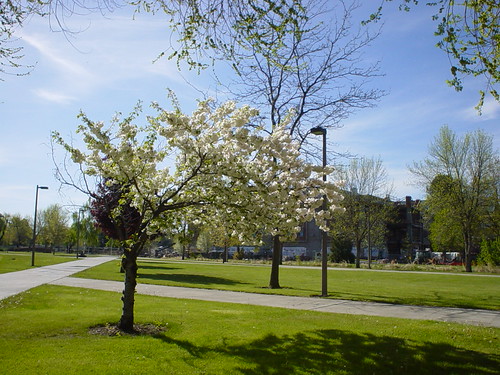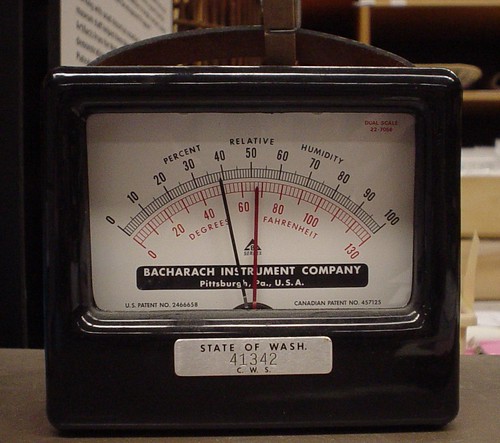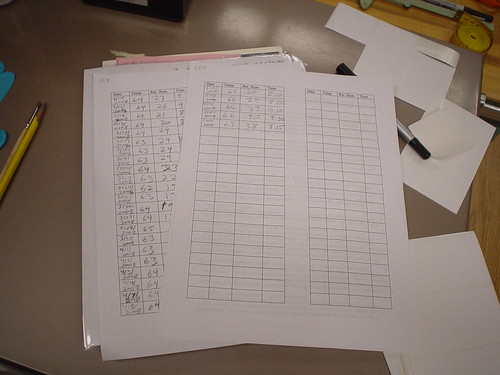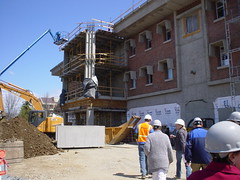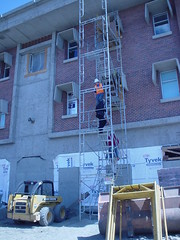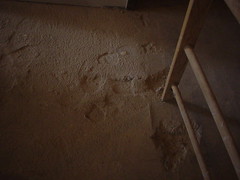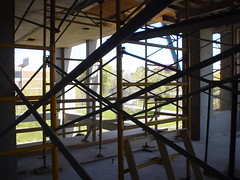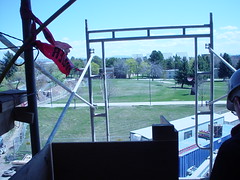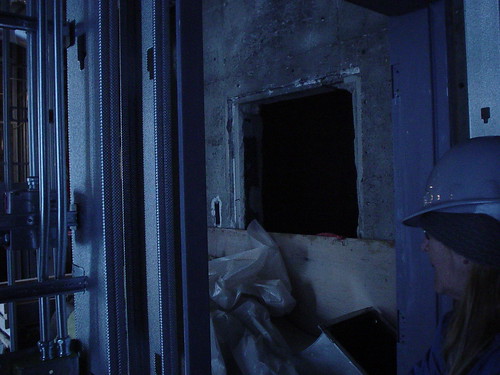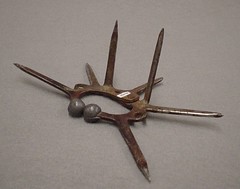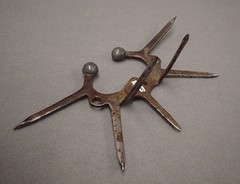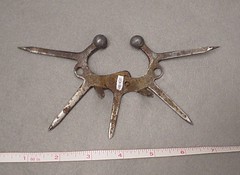One class of tools we frequently use is cutting tools.

When making boxes, cutting foam, etc, we need to use a sharp edged object.
On the left is a box opener, like you'd find in any hardware store. This is used for cutting cardboard, cutting foam, and sometimes, yes, even opening boxes.
Second from the left is our newest cutting tool: A foam knife. The foam knife is a thing of beauty. We often use 2" thick blocks of ethafoam which can be tricky to cut with smaller, less stiff knives. The interns who work with me have found that this foam knife makes precision work with the foam much easier. Frankly, I am pretty excited by the usefulness of this knife.
In the middle is a plain old kitchen knife. I picked it up for $.49 at the local thrift store. It has served well for cutting foam, but with the presence of the foam knife, it may no longer have a purpose.
Second from the right is a trusty standby: the Exacto knife. Excellent for precision work, cutting thin material, or poking holes through cardboard.
And on the far right is a blade similar to the exacto, but with a useful hook tool at the opposite end.
Not pictured is the noble scissors. Scissors are used from time to time to.... you guessed it, cut things. Notably for cutting tyvek or acid free tissue off of a roll and into shape.
Also not pictured: The First Aid Kit. When one is working with sharp tools designed to cut things, it is important to have adequate first aid supplies on hand. So far we have had no serious injuries. Primarily I've gotten paper cuts from the cardboard which sting like the dickens but are note serious.
So those are the sharp things we use to make proper housing for the many museum objects we care for. In fact, we actually have a drawer with many more exacto type knives and a couple more box cutters. And replacement blades. In the photo above, the blades are sitting atop a self healing cutting board, another extremely useful tool when cutting cardboard and other materials, as it keeps the blades from dulling against hard surfaces and keeps hard surfaces from being marred by blade marks. All tools of the trade.

